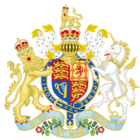Married Women's Property Act 1870 facts for kids

|
|
| Long title | An Act to amend the law relating to the property of married women. |
|---|---|
| Citation | 33 & 34 Vict c 93 |
| Territorial extent | England and Wales |
| Dates | |
| Repealed | 1 January 1883 |
| Other legislation | |
| Amended by | Married Women's Property Act 1870 Amendment Act 1874 |
| Repealed by | Married Women's Property Act 1882 |
| Relates to | Married Women's Property (Scotland) Act 1881 |
|
Status: Repealed
|
|
The Married Women's Property Act 1870 was an important law in the United Kingdom. It allowed married women to legally own the money they earned and the property they received. Before this Act, a woman's money and property usually became her husband's when she got married. This law was a big step towards giving women more rights.
Contents
Why This Law Was Needed
Before 1870, when a woman got married, she lost control over almost everything she owned. Any money she earned, or property she received as a gift or through inheritance, automatically became her husband's. This was part of an old legal idea called Coverture. It meant that a wife's legal identity was combined with her husband's. They were seen as one person under the law, and the husband was in charge.
For example, if a woman owned a house or land, she still legally owned it. But she couldn't rent it out, sell it, or do anything with it without her husband's permission. She also couldn't make contracts or owe money on her own. She couldn't even go to court by herself. Only very rich women could sometimes protect their property using special legal arrangements called trusts. But these were too expensive for most people.
Single women and widows, however, were called femes sole. They already had the right to own property in their own names.
The Fight for Change
Women and some men started campaigning for this law in the 1850s. One important person was Barbara Bodichon (1827–1891). She was a strong supporter of women's rights. In 1854, she wrote a book called A Brief Summary of the Laws in England concerning Women. She worked hard to change the laws about married women's property.
In 1868, the effort to pass the Act became stronger. A new bill was introduced in Parliament. It suggested that married women should have the same property rights as unmarried women. After a long and active campaign by women's groups and their supporters, the Act was finally passed.
What the Act Changed
The Married Women's Property Act 1870 made some key changes:
- Earnings: Any money a wife earned from her work, job, or skills (like writing or art) was now legally her own. Her husband could not take it. This also included any investments she made with that money.
- Inheritance: A wife could keep any property she inherited from her family as her own. She could also inherit money up to £200.
- Rented Property: Married women could continue to hold rented property in their own name and inherit it.
- Child Support: The Act made married women responsible for helping to support their children using the money they earned. Husbands were still responsible too. This meant both parents shared the legal duty to support their children if they had their own property.
This Act gave married women a separate legal right to their own property. It also protected them from their husband's debts. This meant that, for the first time, it was possible for married women to live apart from their husbands and support their children.
Limitations of the Act
Even though it was a big step, the 1870 Act had some weaknesses:
- Before Marriage Property: It mainly focused on a wife's earnings. It wasn't very clear about property a woman owned before she got married. Things like money, furniture, or animals she owned before marriage still legally became her husband's.
- Not for Everyone: The Act did not apply to women who married before 1870. They could not get back the property they had owned before marriage. This limited how much the Act helped.
- Limited Inheritance: While it allowed women to inherit up to £200, it didn't clearly cover larger amounts.
Lasting Impact
The Married Women's Property Act 1870 was very important. For the first time in British history, it allowed newly married women to legally keep their own earnings and inherited property forever. It also made married women legally responsible for helping to support their children.
This Act was passed at a time when women had very few rights. Women were not allowed to vote in national elections. Some people believe this Act helped pave the way for women to get the right to vote later on. Before this Act, married women were not seen as individuals who could have their own vote. Their husbands were traditionally seen as representing them.
The Act helped change this idea. It laid the groundwork for an even stronger law, the Married Women's Property Act 1882. It also contributed to the 1918 Representation of the People Act, which gave many women over the age of thirty the right to vote in the United Kingdom.

